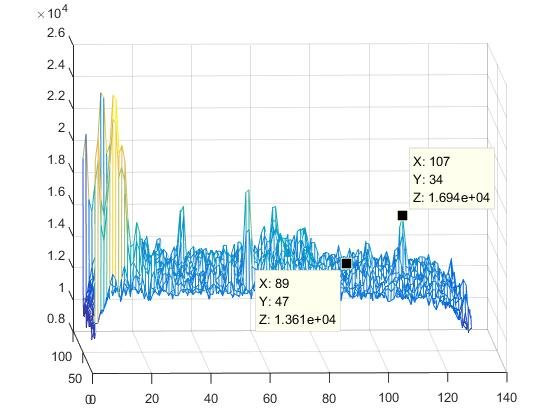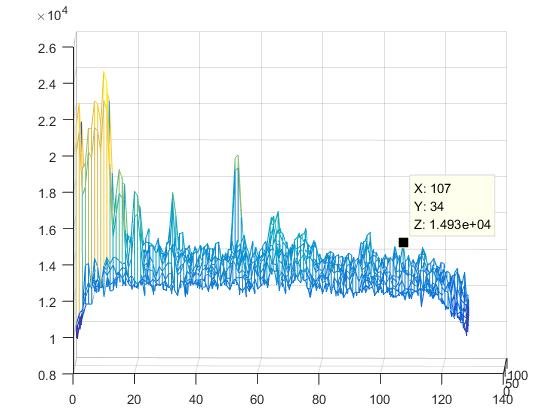Hi team,
Some details are as follows:
The software architecture is the ported SDK4.2.3, the transmit mode is in DDMA mode, the waveform is a single waveform with 256 ADC samples per chirp. 384 chirps in total per frame. The horizontal angle target detection range specification is designed to be ±70°.
In the darkroom test, the customer did the antenna pattern gain test, which was similar to what was expected, because the target could not be seen in the angle range of more than ±50°. By exporting the data from the detection_matrix in DSS_L3 memory from CCS's memory browser and plotted in Matlab, the results are shown in the following figure (the x-axis represents the distance unit dimension and the Y-axis represents the Doppler unit dimension, Z axis represents the magnitude. The target of the release is at (107, 34) and the point at (89, 47) is the approximate magnitude of the marked noise floor):


The first plot is the result of the target at 0° in the radar and the second plot at 55° in the radar.
According to the results plot, the problem is that the target cannot be seen because the signal-to-noise ratio of the target at ±50° is not constant enough to limit the alarm threshold. With the antenna pattern test results generally normal, the customer suspects that the problem may be caused by the large noise floor.
Software with AWR2944 and SDK4.2.3 in the general example of DDMAdemo provided by TI, is the noise floor magnitude of detection_matrix similar to the noise floor magnitude in the figure above? If not, what might be the possible cause especially during the DPC processing link?
Could you help check this case? Thanks.
Best Regards,
Cherry

